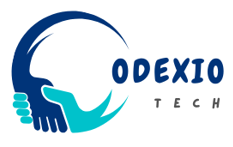DevOps is a combination of practices and tools of development (Dev) and operations (Ops) teams. It is a collaborative approach to help shorten the software development lifecycle and deliver high quality software. The aim of DevOps is to streamline the process, and improve the time-to-market without compromising on the quality.
To stay competitive in the ever evolving digital world, it is essential to adopt the frameworks that allow you to meet the needs of your users on time. DevOps helps you in rolling out faster updates of your products and enhancing the user experience.
How Does DevOps Work? The DevOps Lifecycle
Devops is not just the use of tools and software to improve efficiency, it is a complete philosophy and a cultural shift in an organization. By adopting DevOps, teams foster collaboration and the complete development lifecycle is a responsibility of each individual involved. When a cross functional team comes into existence the end goal is shared by everyone.
Key practices include Infrastructure as Code (IaC), which automates resource management, ensuring consistency and reliability. Microservices architecture helps in scaling up or down easily. Version control systems play a vital role by enabling teams to track code changes and collaborate effectively. Continuous Integration and Continuous Deployment (CI/CD) further streamline the process by automating testing and deployment, allowing for rapid, iterative releases. These practices allow us to manage the resources efficiently to help meet the ever changing needs of users.
DevOps works on 5 Cs, Continuous Development, Continuous Integration, Continuous Deployment, Continuous Testing and Continuous Monitoring.
- Continuous Development: Continuous development involves planning and coding of the software. Further enhancements that are to be made in the software are discussed and the process of code development begins. Tools like SVN, Git, Maven and Gradle are used for version control and building the code so it can be shared for testing.
- Continuous Testing: Continuous testing helps identify and resolve bugs in the earlier stages to prevent any delay in the process. Automated testing is carried out in simulations using docker containers. By opting for automated testing tools the testing process becomes easier. Selenium, Junit and Jenkins are some of the tools that can be used for automated testing processes.
- Continuous Integration: Due to continuous development, continuous integration is a necessity. By integrating the recently committed code with the existing code. It allows the new features to become a part of the existing software. Incase of any issue with the updated build, the developer is notified so it can be rectified right there and then.
- Continuous Deployment: At this stage, the code is deployed to the production environment. Continuous deployment allows to automatically deploy the changes that pass the automated tests and have been integrated successfully. It helps to quickly bring the updated product into the market so the end users can benefit from it. Containerization and Configuration Management is an important part of Continuous Deployment.
- Continuous Monitoring: User feedback is gathered in continuous monitoring to help create a better version of the software for the users. Continuous monitoring helps in enhancing the end user experience by collecting data about any bugs and crashes and logging them in the repository for future uses.

Importance and Benefits of DevOps
DevOps is becoming a very important part of software development. There are several benefits that contribute to enhancing the importance of DevOps.
- Accelerating Software Delivery: Continuous Integration and Continuous Delivery (CI/CD) helps in reducing the time-to-market which will help give you a competitive edge. DevOps allows you to roll several updates in the same day too.
- Enhancing Collaboration: By breaking the silos of the team, DevOps fosters collaboration to develop a better working environment. The teams communicate more effectively and efficiently to discuss updates and issues. Stakeholders are also kept in the loop with major updates so that everyone can stay on the same page.
- Improving Software Quality: The software quality is improved due to DevOps because of continuous testing. Automated testing and simulating testing environments allows to fix any issues that might arise for users later on. The continuous approach of DevOps enables it to deliver constant small updates with fewer bugs rather than larger upgrades with more bugs.
- Scalability: Products are easily scalable using DevOps tools and practices. By using Infrastructure as a Code (IaaC) and CI/CD pipeline, developers are able to scale the product according to the needs of the users quickly.
- Faster Recovery from Failures: Devops enables bug fixing faster than traditional software development lifecycles. By automating the process, app crashes and bugs are identified and fixed on the dot.
- Cost Savings: By optimizing resource utilization, reducing time to market, improved communication and collaboration and fewer bugs allows companies in cost savings. By opting for DevOps you will get to enjoy all these benefits by staying in your budget.
- Better Customer Experience: Continuous monitoring and logging allows to collect user feedback and work on it. It helps the team in deciding which features are required by the users, what needs fixing, which functionalities are excessive and what further innovation should be done. When the software is updated according to user requirements, it helps in giving the customers a better experience and promotes business growth.
In conclusion, Codexio Tech highlights the critical role of automating tasks such as testing and deployment within the DevOps framework, alongside incorporating monitoring and feedback for ongoing improvement. This agile methodology promotes a culture of shared responsibility and innovation, leading to faster release cycles and fewer errors. As organizations adopt DevOps, Codexio Tech enhances its adaptability and responsiveness to market demands, ensuring continued competitiveness in a rapidly changing digital landscape.

